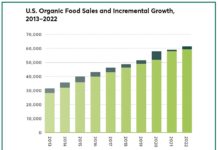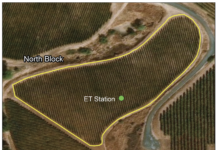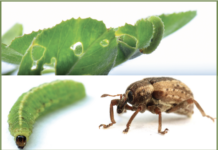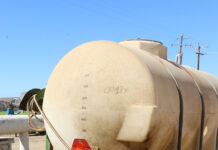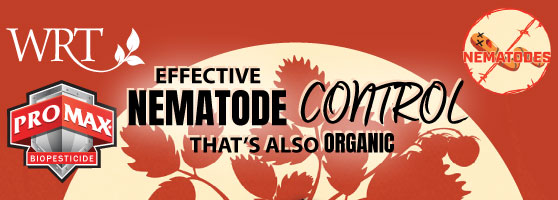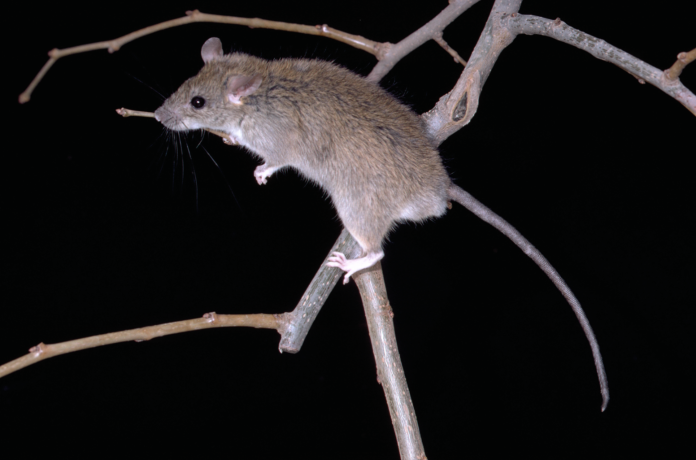
Invasive roof rats are causing damage in citrus orchards throughout California.
Kern and Tulare counties are sites of roof rat infestations in citrus as well as Southern California citrus growing regions. Once a population of roof rats becomes established, they can be found throughout an orchard, girdling tree branches and damaging fruit.
Roger Baldwin, UCCE wildlife specialist, said a multi-year study is underway to develop management strategies for roof rats, which are causing significant damage in a number of tree nut and fruit crops.
Roof rats are active year-round, building nests in citrus trees or burrows near the base of the trees. They forage away from their burrows, and signs of activity are sometimes difficult to see. Their burrows are about 1.5 to 2 inches in diameter, distinguishing them from ground squirrels.
Baldwin said roof rat activity may vary depending on the variety of citrus. In Meyer lemon, for example, he said rats have been found to eat the rind and leave the fruit. Extensive girdling of tree branches has also been observed in Lisbon lemon, but little branch girdling and more extensive fruit damage in navel orange. In navels, rats chew holes in the rind, eat the fruit and leave a shell behind. Another sign of a rat infestation, in orchards with snail populations, is piles of empty snail shells.
Baldwin said the UC study would be focused on cost-effective methods of control, including rodenticides and traps. He said the new A24 trap on the market, which use lures and CO2 cartridges triggered by rat activity, may save labor costs. However, these traps have not been tested in ag fields, so their efficacy is currently unknown. Rodenticides are another alternative, but restrictions may limit use. Diphacinone grain can be used, but bait stations are more effective when placed in trees rather than on the ground. Bait is also less likely to be eaten by non-target animals when placed up in the tree.
UC researchers plan to study rat movement patterns in orchards, which will help them test efficacy of management tools. Growers interested in participating in the study should contact UC research associate Ryan Meinerz at rmeinerz@ucdavis.edu for more information. More information on controlling roof rats can be found at UC ANR publication 8513, Managing Roof Rats and Deer Mice in Nut and Fruit Orchards.



